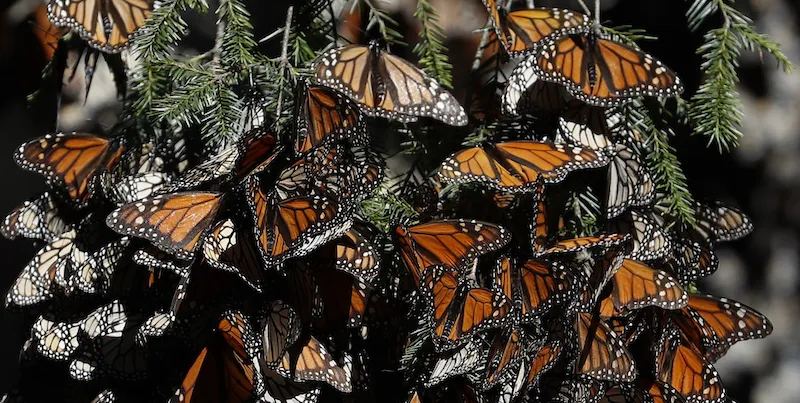download player
All fall monarch butterflies (Danaus plexippus) begins a 5,000-kilometre journey from the United States and Canada to the warm forests of Mexico, where they spend the coldest months to avoid the harsh North American winter climate. Once there, they rest on the branches of trees adjacent to each other, covering them with yellow-orange color: they resemble leaves and sometimes there are so many that they change the color of the landscape, attracting thousands of tourists.
Over the past few decades, the number of monarchs has steadily decreased due to climate change and deforestation, as a result of which there have also been much fewer specimens that migrated. This year though, according to one study Conducted by the World Wide Fund for Nature in Mexico, the numbers of monarch butterflies that have arrived in Mexico have increased, which may indicate that they are adapting to new climatic conditions.
Monarch butterflies are among the most famous insects in Canada and the United States and are considered a symbol of several states, including Texas, Illinois and Minnesota. Every year around November, millions of specimens migrate to the forests of Michoacan and those west of Mexico City, in the central part of the country, where populations have been monitored since the 1990s.
In these areas, the presence of butterflies is assessed not by counting individual specimens, which would be rather complicated, but by counting colonies and observing their placement. According to Mexico’s National Commission for Protected Areas (CONANP), that Foot The results of the study last week, last winter the presence of monarch butterflies increased by 35 percent compared to the same period the previous year, as it moved from its spread in 21,000 square meters of forest to a cross-sectional area of about 28,400 square meters. .
It is not currently clear what led to the overpopulation observed in Mexico, but scientists believe it stems from a number of factors, including an increased ability to adapt to new climatic conditions.
For the past 30 years, the population of monarch butterflies has been living in the eastern part of the United States has fallen 88 percent: to make a comparison with the most recent data, in the mid-1990s the number of monarchs in Mexico was spread over an area of 182 thousand square meters; In the winter between 2018 and 2019 it decreased to about third.
Among the main reasons for the decline of butterflies is climate change, which is attributed to an increase in the frequency of extreme weather events, such as heat waves and droughts in areas where monarchs breed and in those that they pass during migration. Another factor is deforestation: to make way for infrastructures, pastures or crops, nectar plants essential to their survival have been wiped out both on migration routes and in Mexican forests, while in North America the only herbaceous plant is disappearing. feeding its larvae)Asclepias tuberosa).
The director general of the WWF in Mexico, Jorge Ricardes, attributed the recent increase in the number of butterflies to the Mexican government’s efforts to conserve the forests into which they migrate and to the initiatives of activist groups in Canada and the United States, which have begun to grow various plants from nectar and pollen. Regions. Rickards remember However, the winter migration of monarch butterflies is still an “endangered phenomenon”.
According to CONAP official, Gloria Tavira, the butterflies “They are starting to adapt In extreme weather conditions”, in fact they were seen this year in Mexico also in April, while they usually leave to return to North America around March. However, the population increase observed this year could also have been influenced by last year’s unusual behavior: the butterflies began migrating north as early as February, arriving in the United States and Canada in April and May, before the period. From extreme heat and drought.
Finally, in the period of the last migration to Mexico, far fewer plants died than in the previous winter due to fires, droughts, diseases or pesticides. However, there is still a risk of habitat loss, as logging and woodworking in butterfly-populated areas during the last migration increased 4.5 percent compared to winter 2020-2021.
– Read also: The butterfly that accidentally brought three other species to the Baltic Sea

“Reader. Travel maven. Student. Passionate tv junkie. Internet ninja. Twitter advocate. Web nerd. Bacon buff.”





